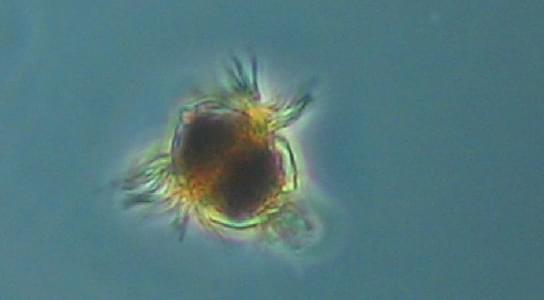Circa 2012
In nature, you’ll find animals that undergo vast transformations, becoming almost unrecognizable in their new forms. Examples like caterpillars becoming butterflies and tadpoles becoming frogs almost look like distinct animals in the different stages of their evolution.
While this might sound amazing, all stages of these animals still belong to the same biological taxonomic rank, Animalia. This means that caterpillars don’t become plants, in their new shapes, they remain animals. That’s not what Mesodinium chamaeleon does. This single-celled organism is a unique mix of animal and plant life.
Mesodinium chamaeleon, a ciliate –a group of protozoans – found in the oceans around Scandinavia and North America, was discovered in Nivå Bay (Baltic Sea) in Denmark by Øjvind Moestrup of the University of Copenhagen and his team. Other specimens have been found off the coasts of Finland and Rhode Island.
